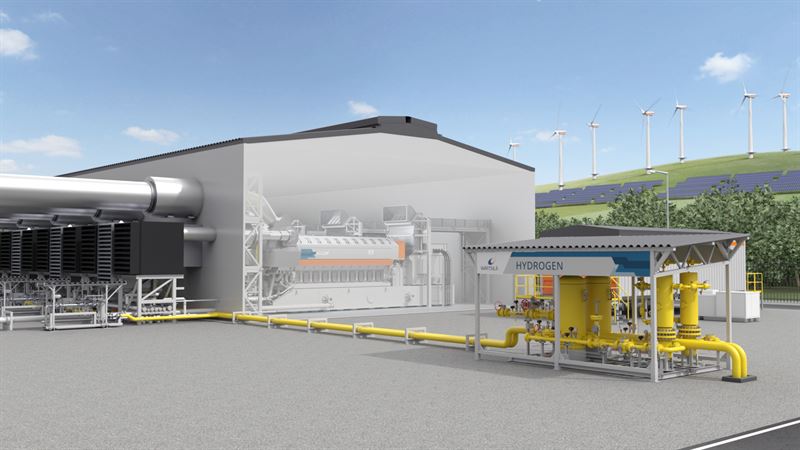Wärtsilä has introduced the world’s first large-scale engine power plant that is 100% hydrogen-ready.
The International Energy Agency (IEA) World Energy Outlook 2023 highlights the critical role of hydrogen in future power systems. According to the report, achieving net-zero emissions by 2050 will require substantial hydrogen consumption in power generation—17 million tonnes by 2030, increasing to 51 million tonnes by 2050. This underscores the necessity of integrating hydrogen into the energy mix to complement the doubling deployment of renewables expected by the end of this decade.
Wärtsilä’s new hydrogen-ready engine power plant represents a significant technological advancement. The engine, based on the Wärtsilä 31 platform, is designed to run on 100% hydrogen, a notable improvement from existing technology that accommodates natural gas and 25% hydrogen blends. The engine can synchronize with the grid within 30 seconds, ensuring energy security and flexibility. This rapid response capability is crucial for balancing the intermittent nature of renewable energy sources like wind and solar.
The Wärtsilä 31 engine platform claims to be the most efficient in the world, with over 1 million running hours and 1,000 MW installed capacity globally.
The TÜV SÜD certification for the Wärtsilä hydrogen-ready engine demonstrates compliance with quality and safety standards. However, the certification process is staged, and Wärtsilä has only achieved the first stage—a Concept Certificate. Full certification, which includes operational testing and validation, will be crucial for industry acceptance and market readiness.
Wärtsilä’s hydrogen-ready engine power plant marks a pivotal step in the energy transition. If successfully implemented and scaled, it could play a vital role in achieving a fully renewable power system. The flexibility to switch from natural gas to hydrogen positions it as a future-proof solution, aligning with global climate goals.





